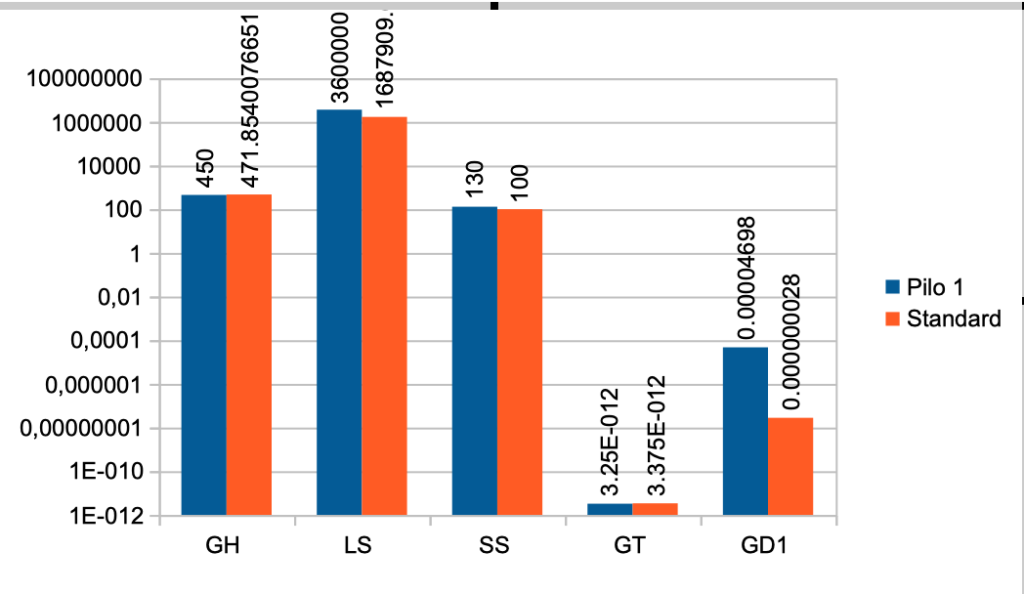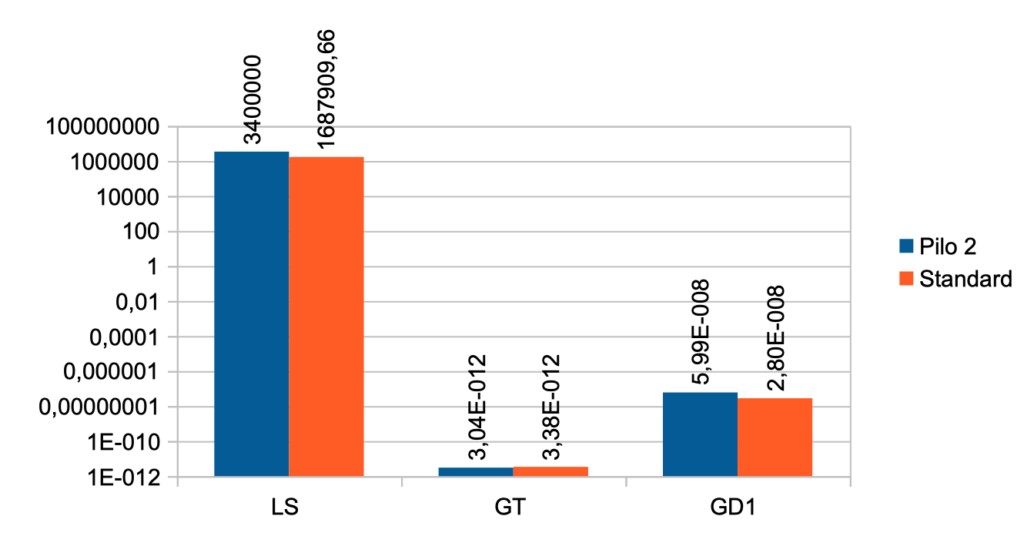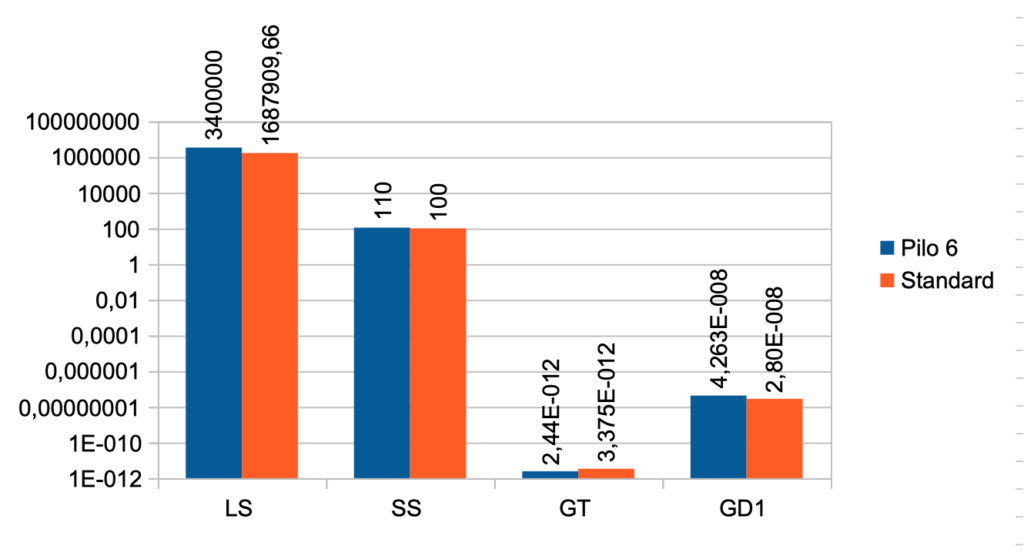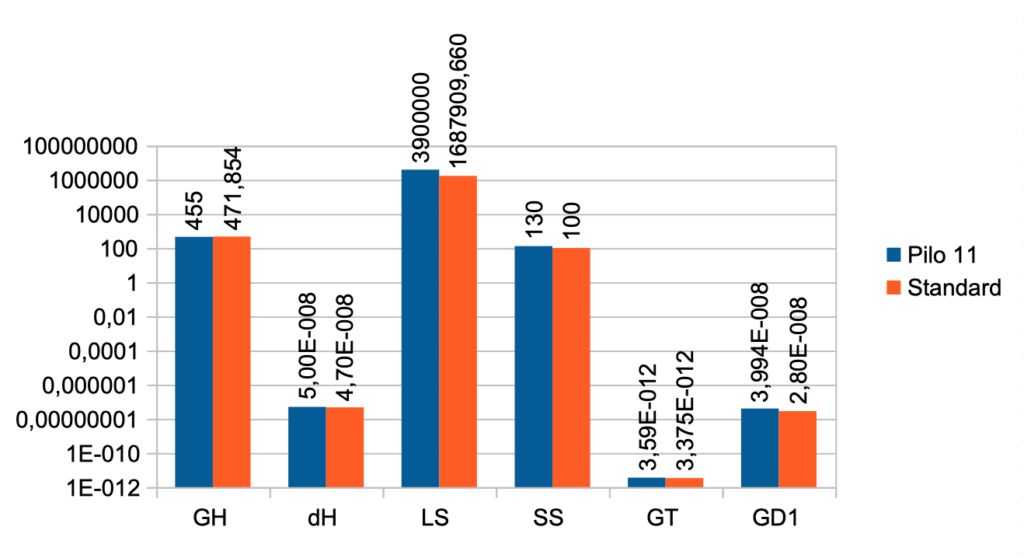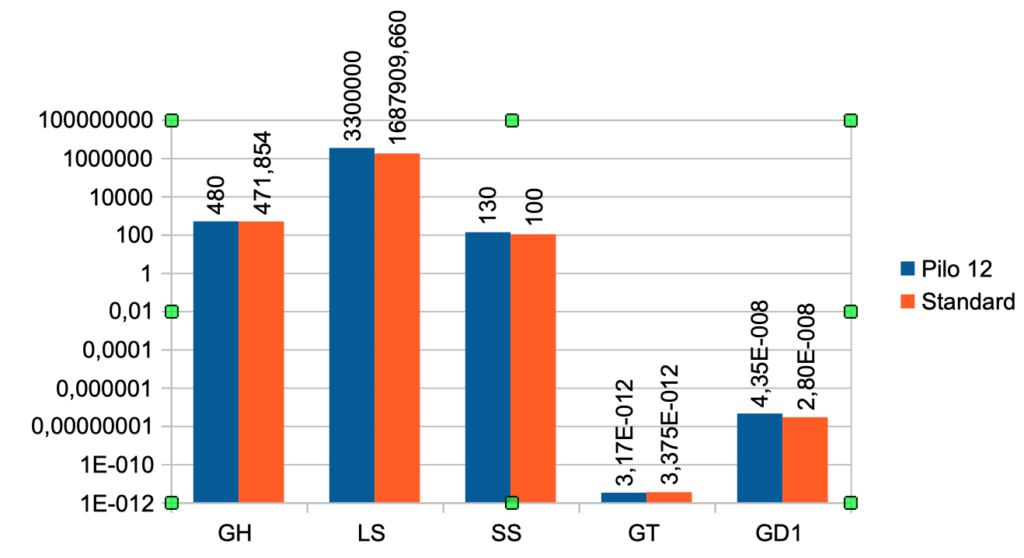Standard figures from the SimThyr calculation.
Case No. 2 from Kubota et al. showing overt hypothyroidism
Case No. 5 from Kubota et al. showing overt hypothyroidism
modelling
I would like to know how hypothyroid the model can get when the different parameters from fig. 6. A in Principles, Hoermann et al 2022.
Recap text from fig. 6. A: FT4 levels (blue curve) decline, but the mechanisms in system (sys. 10) protect FT3 levels (green curve), keeping them in a range close to the original level, as the percentage of the estimate of FT4 production rate constant (k32 = 0.4 to 1.1) decreases – as typical at the onset of hypothyroidism in patients suffering from autoimmune thyroiditis and progressive thyroid destruction. Other parameters are chosen within ranges, k423 = 0.2-0.3, k43 = 0.7-0.8 and k42 = 0.1-0.2, to approximate the relative contributions to FT3 production according to (32).
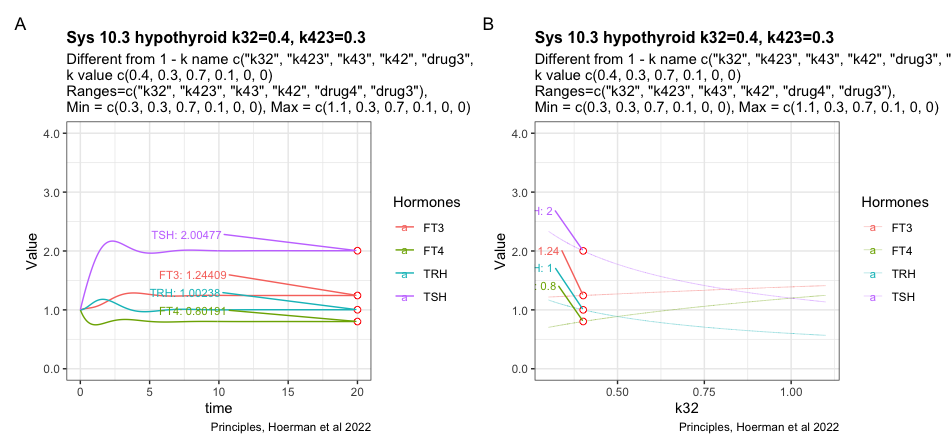
The figures shows the most hypothyroid state the model can achieve under the given conditions.
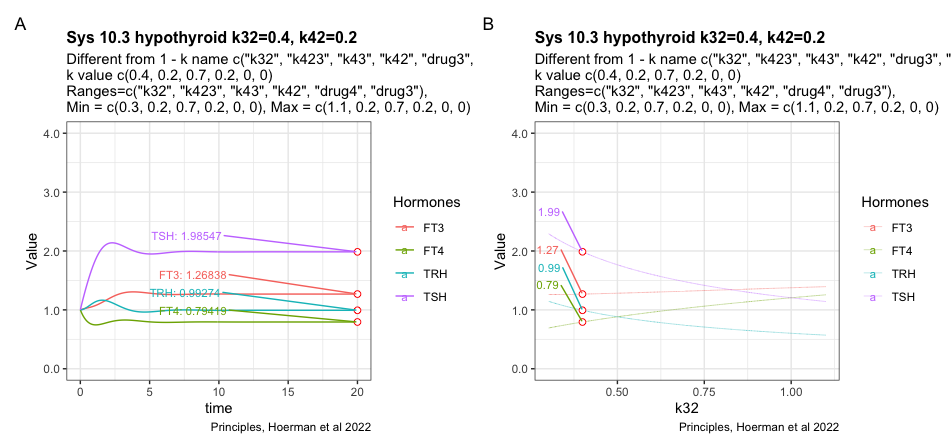
Trying to change the k42 parameter which results in a slight decrease of TSH
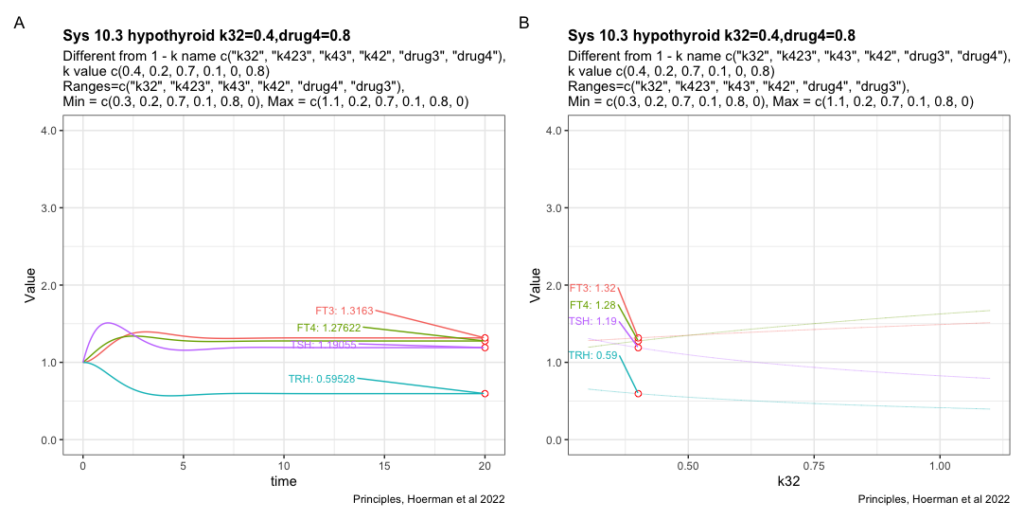
Adding drug4 = 0.8 to the most hypothyroid state. We see FT3 is not returning to the level in the perfect homeostasis. See sys1 below. Apart from that FT3 drops with lower k32.
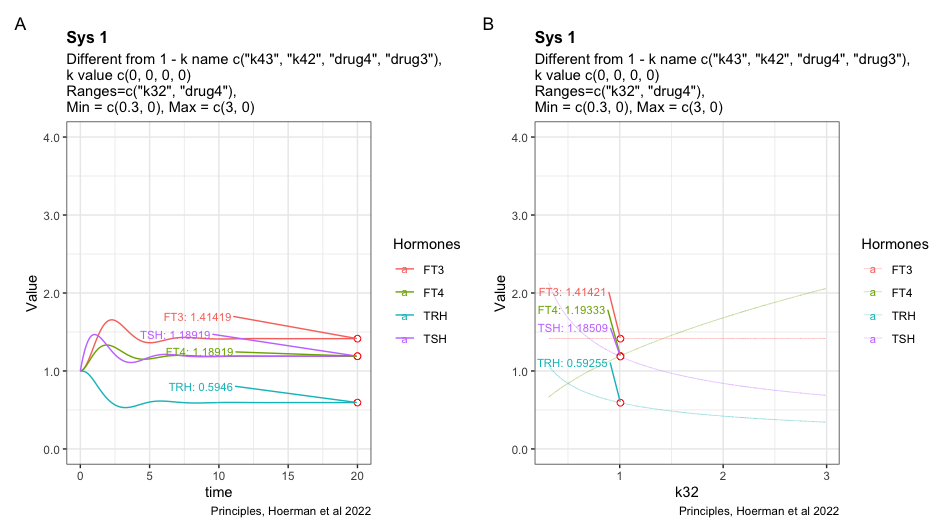
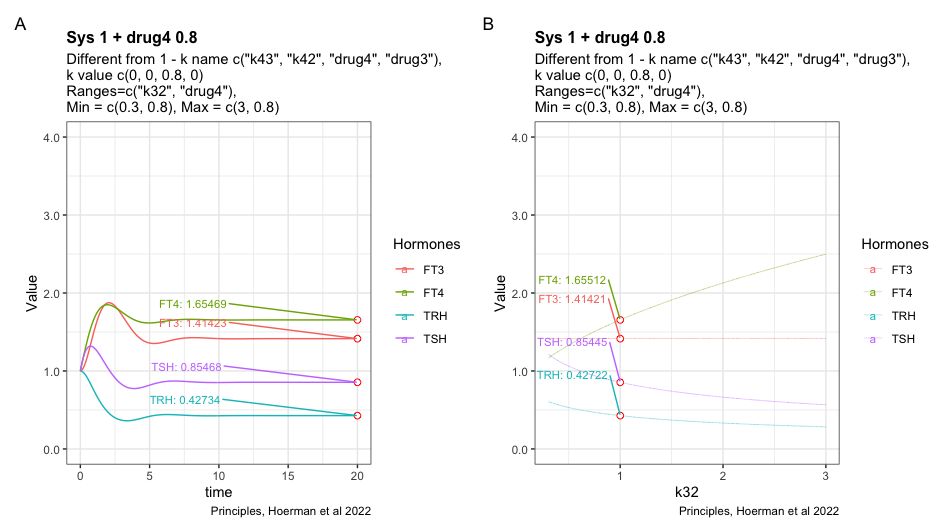
Here I have tried to show the pattern following perfect homeostasis plus drug4. Mimicing the situation where a patient gets unnecessary LT-4 treatment. Will it be possible to identify the pattern and use it to get the patient off LT-4? Is the pattern disguised by the transformation to real hormone values?
I stumbled over this image the other day – mixing together two images. Yet recreated in R.
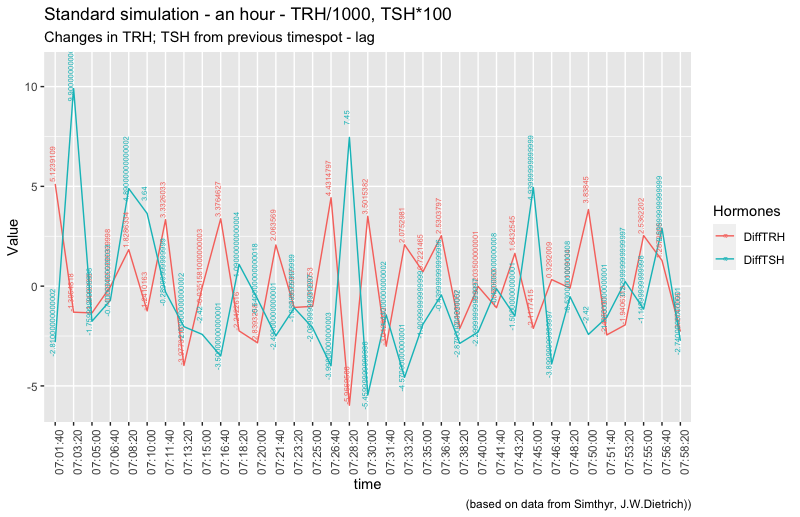
For many of the registrations, you see that there is an opposite movement in TRH and TSH. Though there are registrations where this is not the case. What is the reason? I will, later on, dig into the patterns of the other parameters to look for an explanation.
Looking at TT4 and FT4 gives another picture
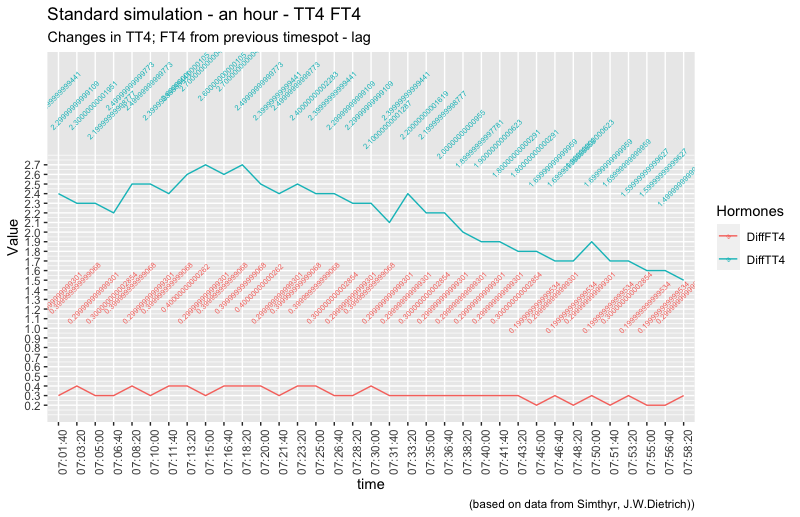
During this time period, it seems as if both total and free T4 is dropping. I will, later on, insert either TSH or TRH to see if there is a pattern to comment on.
TT3 and FT3 have a pattern totally on their own:
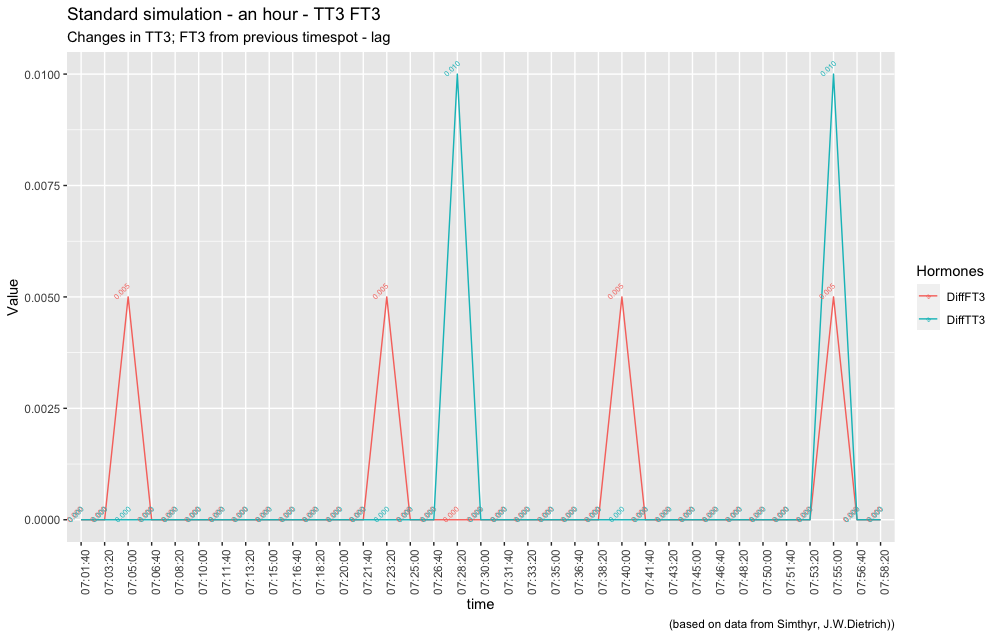
Subtle spikes of either FT3 or TT3 during one hour – this is interesting and totally different from the other patterns.
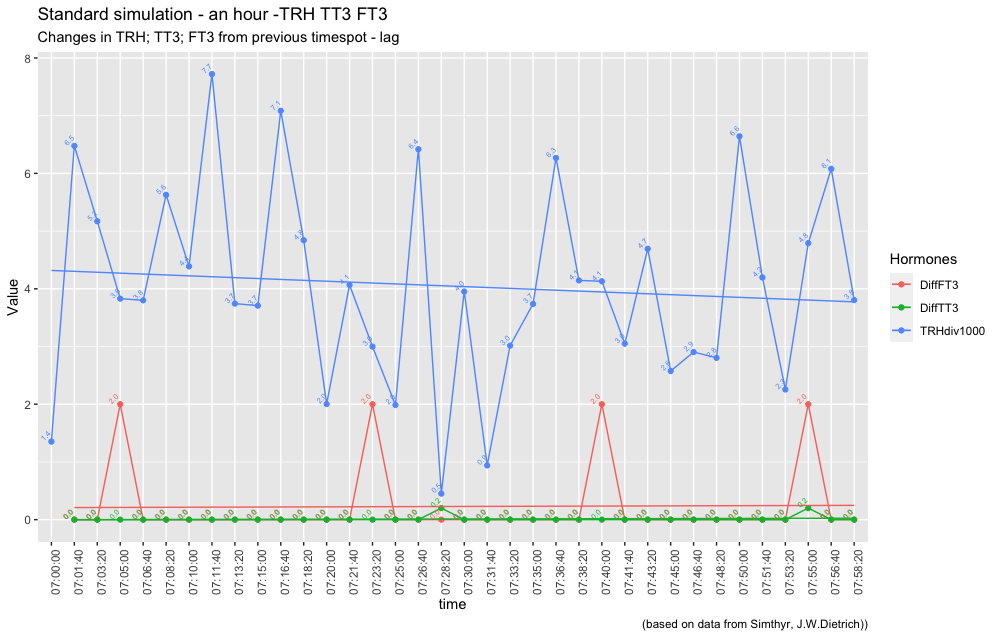
As can be seen – the TRH decrease and in this image, we can see the intervals of FT3 spikes shortens. (Update 23-11-2021) If this pattern also exists in vivo it means that it is difficult to capture the T3 changes as the halflife of T3 is short.
This post will be updated with the same data from a hypothyroid simulation – looking into the changes in the thyroid hormones during hypothyroidism. (19-11-2021)
| Standard figures hour split into quartiles | ||||
| 1 q minutes | 2 q minutes | 3 q minutes | 4 q minutes | |
| FT3_pmol.l | ||||
| Max | 5.6233 | 5.6234 | 5.6235 | 5.6236 |
| Mean | 5.623267 | 5.623344 | 5.623433 | 5.623533 |
| Min | 5.6232 | 5.6233 | 5.6234 | 5.6235 |
| SD | 5E-05 | 5.3e-05 | 5E-05 | 5E-05 |
| FT4_pmol.l | ||||
| Max | 18.6077 | 18.6109 | 18.6137 | 18.6159 |
| Mean | 18.606256 | 18.609511 | 18.6125 | 18.614911 |
| Min | 18.6049 | 18.608 | 18.6113 | 18.6139 |
| SD | 0.00095 | 0.001001 | 0.000822 | 0.000672 |
| TRHdiv1000 | ||||
| Max | 7.720417 | 7.08441 | 6.267683 | 6.641718 |
| Mean | 4.678992 | 3.728701 | 3.770022 | 4.005787 |
| Min | 1.352853 | 0.451124 | 0.939859 | 2.25577 |
| SD | 1.84202 | 2.154548 | 1.435854 | 1.569699 |
| TSH_mU.l | ||||
| Max | 2.7315 | 2.6841 | 2.5769 | 2.4747 |
| Mean | 2.667311 | 2.630967 | 2.491 | 2.4117 |
| Min | 2.5719 | 2.557 | 2.4253 | 2.3814 |
| SD | 0.055473 | 0.037612 | 0.053888 | 0.030551 |
| TT3_nmol.l | ||||
| Max | 3.3796 | 3.3797 | 3.3797 | 3.3798 |
| Mean | 3.3796 | 3.379611 | 3.3797 | 3.379733 |
| Min | 3.3796 | 3.3796 | 3.3797 | 3.3797 |
| SD | 0 | 3.3e-05 | 0 | 5E-05 |
| TT4_nmol.l | ||||
| Max | 128.4115 | 128.434 | 128.4528 | 128.468 |
| Mean | 128.401744 | 128.424311 | 128.444867 | 128.461456 |
| Min | 128.3923 | 128.4142 | 128.4363 | 128.4546 |
| SD | 0.006533 | 0.006775 | 0.005693 | 0.00463 |
Update (22-11-2021)
Pilo (1) and Kobuta (2) are different scenarios and here we have looked into TSH, FT3 and FT4 from the Simthyr model.
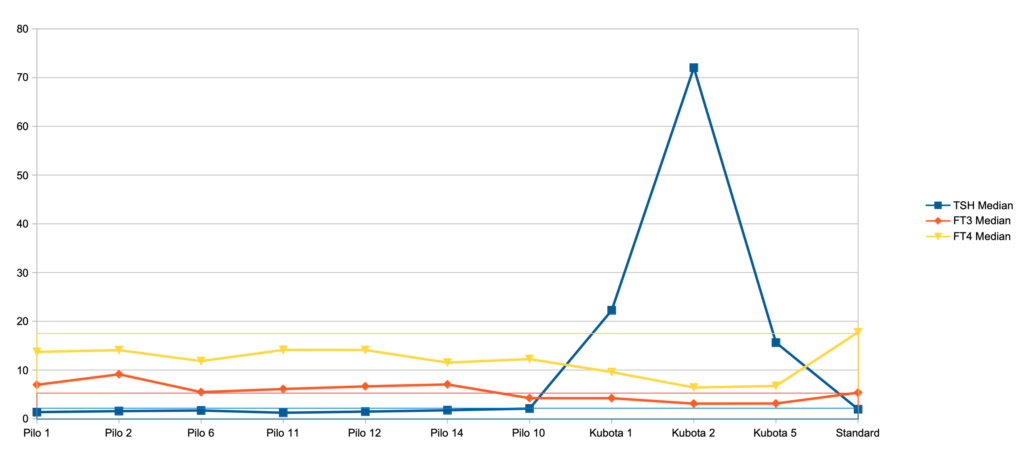
Below you find the description of the Pilo scenarios (The Kubota scenarios will follow later in the text) – The last entry is the figures for the standard scenario in SimThyr:
| Case No. 1 from Pilo et al. showing slight hyperdeiodination and high conversion rate The FT3 value is 6,97 a little higher than the standard value (5,36) The FT4 value is lower than the standard value (17,76) – Pilo 1 (13,72) The TSH value is 1,36 and the standard value is 1,96 Pilo 1 GH < (lower than) standard. See the effect of GH here Pilo 1 LS > (higher than) standard. See the effect of LS here Pilo 1 SS > standard. See the effect of SS here Pilo 1 GT < standard. See the effect of GT here Pilo 1 GD1 > standard. See the effect of GD1 here (Diagram) |
| Case No. 2 from Pilo et al. showing slight hyperdeiodination The FT3 value is 9,13 a little higher than the standard value (5,36) The FT4 value is lower than the standard value (17,76) – Pilo 2 (14,08) The TSH value is 1,57 and the standard value is 1,96 Pilo 2 LS > standard. See the effect of LS here Pilo 2 GT < standard. See the effect of GT here Pilo 2 GD1 > standard. See the effect of GD1 here (Diagram) |
| Case No. 6 from Pilo et al. with low secretion rate for T4 The FT3 value is 5,46 a little higher than the standard value (5,36) The FT4 value is lower than the standard value (17,76) – Pilo 6 (11,84) The TSH value is 1,70 and the standard value is 1,96 Pilo 6 LS > (higher than) standard. See the effect of LS here Pilo 6 SS > standard. See the effect of SS here Pilo 6 GT < standard. See the effect of GT here Pilo 6 GD1 > standard. See the effect of GD1 here (Diagram) |
| Case No. 11 from Pilo et al. with high secretion rate for T4 The FT3 value is 6,11 a little higher than the standard value (5,36) The FT4 value is lower than the standard value (17,76) – Pilo 11 (11,84) The TSH value is 1,23 and the standard value is 1,96 Pilo 11 GH < standard. See the effect of GH here Pilo 11 dH < standard. See the effect of GH here Pilo 11 LS > standard. See the effect of LS here Pilo 11 SS > standard. See the effect of SS here Pilo 11 GT < standard. See the effect of GT here Pilo 11 GD1 > standard. See the effect of GD1 here (Diagram) |
| Case No. 12 from Pilo et al. with high production rate for T3 The FT3 value is 6,64 a little higher than the standard value (5,36) The FT4 value is lower than the standard value (17,76) – Pilo 12 (14,1) The TSH value is 1,47 and the standard value is 1,96 Pilo 12 GH < standard. See the effect of GH here Pilo 12 LS > standard. See the effect of LS here Pilo 12 SS > standard. See the effect of SS here Pilo 12 GT < standard. See the effect of GT here Pilo 12 GD1 > standard. See the effect of GD1 here (Diagram) |
| Case No. 14 from Pilo et al. with low production rate for T3 Coming soon |
| Case No. 10 from Pilo et al. with normal values for SPINA-GT and SPINA-GD |
| Case No. 1 from Kubota et al. showing latent (subclinical) hypothyroidism |
| Case No. 2 from Kubota et al. showing overt hypothyroidism |
| Case No. 5 from Kubota et al. showing overt hypothyroidism |
Look hypophyseal secretory capacity (GH) up – LINK
